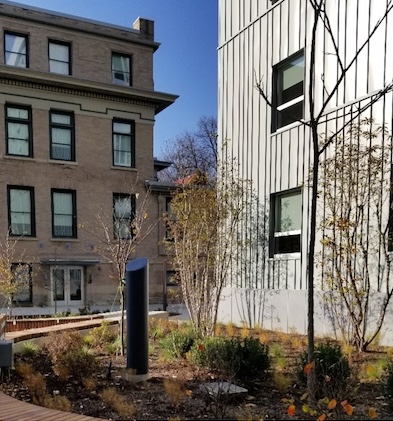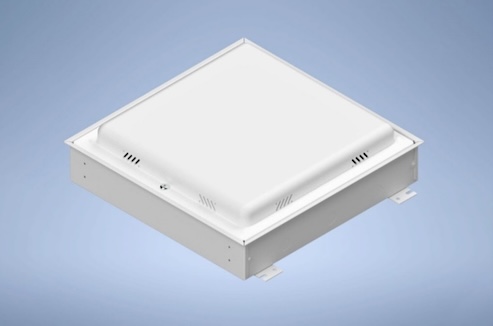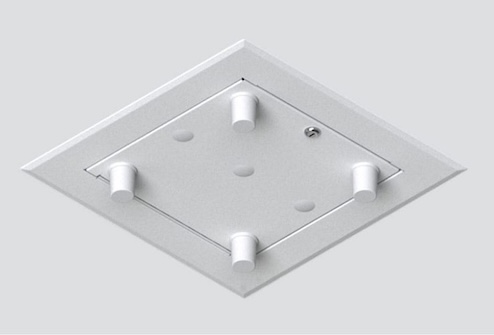Are You Thinking about Deploying a CBRS-Based Private LTE/5G Network?
March 19, 2024
The wireless industry has experienced several significant transformations in a relatively short period of time, such as FCC’s release of the 6GHz band to Wi-Fi and other unlicensed uses, Wi-Fi 6E, Wi-Fi 7, 5G cellular, and more!
However, another significant release which occurred behind the scenes, is FCC’s release of the Citizens Broadband Radio Service (CBRS) for commercial and public use. Also known as CBRS band 48, CBRS is the first shared cellular wireless spectrum offering everyone the capability of accessing premium mid-band spectrum.
Advancements in technology evolutions are not likely to slow down.
Currently, we are right in the middle of even more advancements to be ratified and released in the very near future, with CBRS-based private LTE/5G cellular network adoptions on the rise.
-
Private long-term evolution (LTE) is a cellular-based technology that offers commercial and enterprise businesses, schools, hospitals, airports, municipalities, and cities a private network that extends internet access to its members. The term is generally associated with the particular type of 4G network that delivers a fast mobile Internet experience, commonly referred to as 4G LTE. Private LTE networks could be licensed or unlicensed, determined by the owner's requirements. They are designed to be more adaptable, permitting a greater flexibility for customization and integration with existing systems relative to public LTE networks. Offering a broad range of coverage and owner control, private LTE networks can provide increased security and privacy measures compared to public LTE networks. This is especially important for businesses managing sensitive data or operating in highly regulated environments. Private LTE networks can also be tailored to implement more effective and focused traffic management control.
-
5G is the next stage in cellular network evolution. 5G is the 5th generation global mobile network designed with enhanced performance that can connect virtually everyone and everything together including machines, objects, and devices. The goal of 5G is to deliver faster speeds, lower latency, greater reliability, and enhanced connectivity. 5G, which was launched in 2019, continues to mature and expand broadband wireless services beyond mobile internet to IoT, connecting vehicles, Augmented Reality (AR,) Virtual Reality (VR,) enhanced video streaming, gaming and critical communications segments.
-
The CBRS band is a high-speed broadband spectrum that ranges from 3550 to 3700 MHz. It consists of 150 MHz of spectrum in the 3.5 GHz band. The release of the 3.5 GHz CBRS band for public use in the U.S, is the first system in history that offers the capability for enterprise networks and service providers to share the same frequency spectrum for a cellular network. The availability of the 3.5 GHz CBRS band means that schools, commercial and enterprise businesses can build a private LTE or 5G network with carrier-class speed, security, range, and capacity which was once exclusive to the United States Military and fixed satellite stations. Commercial network deployments began largely in 2020 and opened new possibilities throughout the industry landscape. Although CBRS spectrum is not technology specific, it is a perfect fit for private LTE and 5G because it requires little modification to existing equipment, and IoT devices and mobile devices are already available.
Many enterprise and commercial network professionals, particularly colleges and university campuses are building private LTE/5G networks in the CBRS band as a way to supplement existing Wi-Fi coverage. It’s become essential that public or private LTE/5G and Wi-Fi networks co-exist in a network to meet the expectations of modern-day digital communications.
CBRS-based private LTE/5G provides a way for colleges and schools to have better ownership control over the network. Privately controlled cellular networks provide benefits such as internet access in areas with a high volume of users and a high volume of bandwidth saturating traffic. CBRS-based LTE/5G networks provide an increase in spectrum efficiency and are inherently a low-cost investment which may ultimately help the educational market lower costs for students.
High use cases include high-tech campus innovation labs, science research labs, technology workshops, and outdoor venues. Other high use cases include airport digital transformation hubs, industrial, warehousing and distribution centers where a greater range of connectivity is required for autonomous vehicles, large public venues where network subdivision is required for staff operations while the public uses Wi-Fi, hospitals where the connection to clinical tablets and smartphones are critical, and more.
The proper installation and protection of the hardware is key to ensuring that the network can deliver stability, reliability, and performance. In an evolving wireless landscape continuously shaped by rapidly emerging technologies, wireless professionals must navigate not only the complexities of optimizing the network performance, but also streamline critical operational and functional objectives of the deployment of the edge components.
Whether you are deploying an enterprise small cell access point, CBRS-LTE/5G access point, DAS antennas or Wi-Fi access point indoor or outdoor, turn to Oberon for the industry’s preferred mounting solutions.
Oberon™ NetPoint™ Wireless Bollard Model 3032
Oberon’s NetPoint 3032 Wireless Bollard is a cost-effective way to extend wireless coverage into auditoriums, sports venues, courtyards, malls, and campus open areas permanently or temporarily.
- Can be used to mount wireless AP devices and antennas in locations where mounting on buildings or light poles is aesthetically unacceptable.
- Designed to protect APs and antennas from weather and tampering. The polyethylene thermoplastic cylinder is virtually transparent to wireless signal.
- Available in custom colors and custom heights.

Oberon™ Wi-Tile™ 2 x 2 Ceiling Tile Enclosure Model 1074-SC-04-DOME
Oberon’s Wi-Tile Series offers many different drop-down doors to satisfy your requirements.
-
Mounts wireless AP devices flush to the ceiling, revealing only the antenna face of the AP for optimal wireless coverage.
-
Boasts an attractive, textured, powder-coat finish which matches many ceilings styles. We offer flat lay-in style and regular.
-
Larger back-box is designed for securing most vendors’ enterprise wireless and small cell APs.
-
Revolutionary interchangeable doors permit simple migration to next-generation equipment.

Oberon ™ Wi-Tile™ Hard-Lid Ceiling Enclosure Model 1051 Series
Oberon Model 1051 Series is designed for Wi-Fi and small cell wireless APs and DAS remote units with integrated or detachable antennas.
-
Aesthetic, white powder-coated steel enclosure with a 17.5-inch square bezel which fastens into the ceiling or wall and simplifies access point moves, adds, and changes.
-
Has openings in the door to mount up to seven external antennas. Other configurations permit the AP or clear polycarbonate dome (1051-CP) to mount in the door.
-
Interchangeable retrofit doors allow upgrade to new AP or antenna solutions in the future.
-
Boasts an attractive, textured, powder-coat finish which matches many ceilings styles. We offer flat lay-in style and tegular.
-
Larger back-box is designed for securing most vendors’ enterprise wireless and small cell APs.

Posted by Bree Murphy, RCDD, Global Technical Training, Applications Engineer Oberon, a Division of Chatsworth Products (CPI) at 3/19/2024 6:19:01 AM